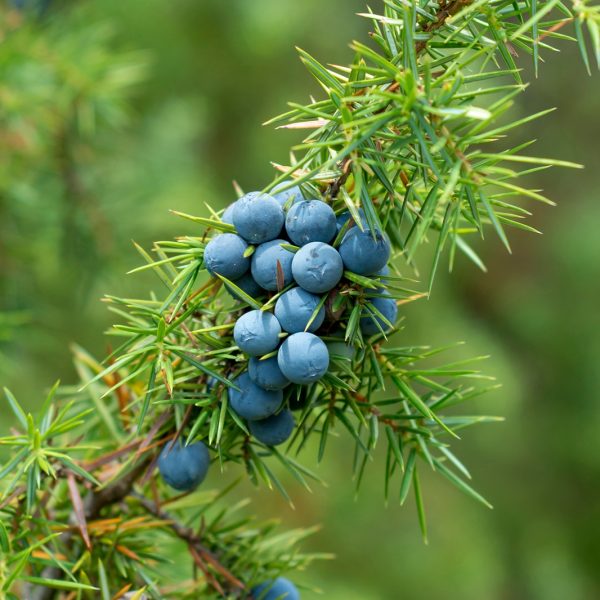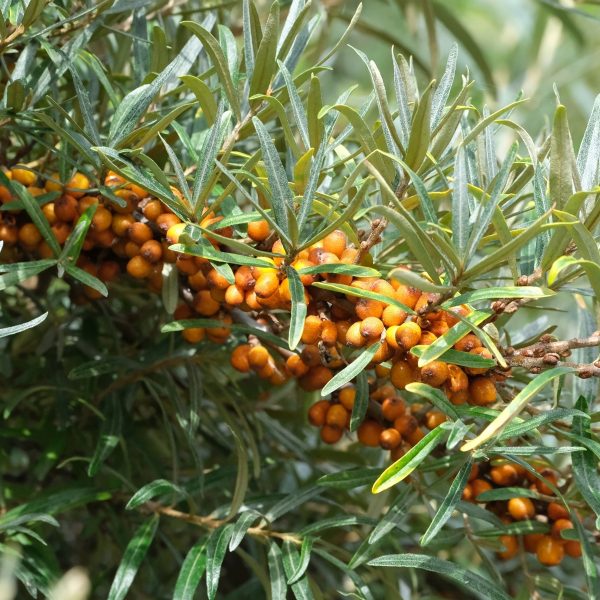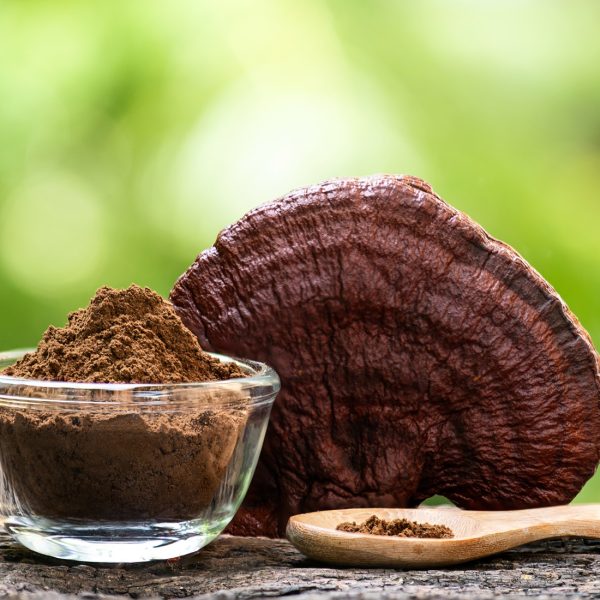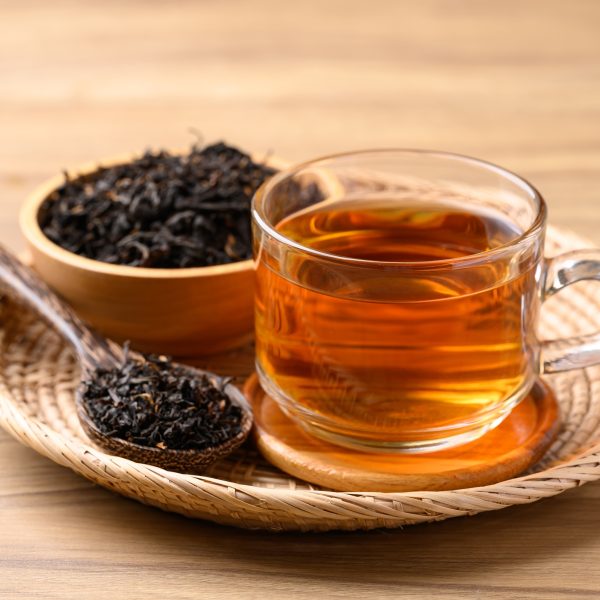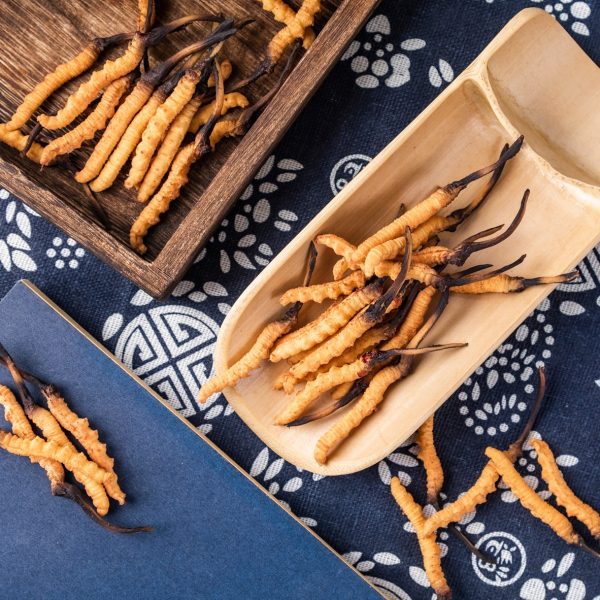PMS is a condition that comprises a collection of debilitating physical and emotional symptoms which commonly occur during the luteal phase of the menstrual cycle.
Understanding PMS
Premenstrual syndrome (PMS), or premenstrual tension (PMT), describes the constellation of physical and psychological symptoms that can occur up to two weeks prior to a menstrual bleed (luteal phase) with some relief seen once the menstrual bleed has occurred (1).
How does PMS work?
In order to better understand the symptoms of PMS, a foundational understanding of the hormones involved and the menstrual cycle is required.

Hormones that affect PMS
Oestrogen
A sex steroid hormone produced in the ovaries, adrenals and adipose (fat) tissue as a response to FSH (follicle stimulating hormone) from the pituitary gland. It is responsible for the growth of uterine muscle and endometrial tissue. It regulates mood, and this can be seen through its promotion of serotonin synthesis and receptor expression. Oestrogen is also known as being an appetite suppressant (anorexigenic)(4,5,6).
Progesterone
A sex steroid hormone which is released by the corpus luteum after ovulation, stimulated by LH (luteinising hormone) from the pituitary gland. Progesterone levels peak in concentration around 6–8 days after ovulation. It is responsible for preparation of the endometrium for fertilisation and should this happen, to maintain the endometrium for pregnancy. It also reduces oestrogen levels by down-regulating the expression of oestrogen receptors. Progesterone can be used in the synthesis of another hormone, allopregnanolone, which binds to GABA receptors causing reduced anxiety, headaches and promoting sleep (6).
Menstrual phases
Follicular phase
This refers to the first half of the menstrual cycle, from day one of the bleed until ovulation. During this time, the follicles in the ovary, which are sacs in the ovary containing immature eggs, start maturing, in preparation for one of them to be released at ovulation.
Luteal phase
This refers to the second half of the menstrual cycle, from ovulation to the last day of the cycle.

Premenstrual/late luteal phase
This is used to explain the period of time, typically around a week, just prior to the menstrual bleed.
The exact aetiology of PMS remains unclear, however, theories include hormonal imbalance, including the relationship between progesterone and oestrogen; neurotransmitter discrepancies; stress; psychosocial factors; diet; nutrient deficiencies or environmental factors (7). PMS occurs due to the shift in hormones in the luteal phase of the cycle. Immediately prior to ovulation, oestrogen levels are at their highest, with progesterone peaking between 5–9 days afterwards. A common factor in PMS sufferers is a lowered ratio of progesterone to other hormones. If fertilisation has not occurred, levels of progesterone and oestrogen continue to decline throughout the luteal phase to prepare the body for menstruation. This can be a contributing factor to the psychological and physical symptoms of PMS (7,8).
Neurotransmitters
Another key factor is the impact of oestrogen and progesterone on neurotransmitters. In order to fully understand this correlation key neurotransmitters have been outlined below.
GABA
An inhibitory neurotransmitter that regulates neuronal activity, playing a crucial role in mood, sleep, cognitive function, motor control, and appetite. GABA has a calming and sedative effect on the brain (9).
Dopamine
Responsible for pleasure, reward and motivation, as well as gastrointestinal motility, coordination, and regulation of pituitary hormones(10).
Serotonin
Involved in modulating mood, memory, appetite, circadian rhythm and body temperature (11).
Understanding the root of PMS
Sex steroid hormones can cross the blood brain barrier, where there is a high density of oestrogen and progesterone receptors involved in regulating emotions, behaviour, cognition, drive and perception. They also affect the expression of neurotransmitter receptors and the activity of GABA, serotonin and dopamine (12,13,14).

The levels of neurotransmitters vary throughout the month in response to hormonal shifts, leading to emotional and motivational fluctuations. In someone suffering with PMS, these fluctuations can be greatly pronounced and have a significant impact on emotions and cognitive function.
Oestrogen, for example, can increase serotonin levels and decrease serotonin reuptake, as well as promoting dopamine release and increasing dopamine sensitivity. When oestrogen levels decline in the luteal phase, their effect on neurotransmitters also declines resulting in subsequent physiological effects, such as changes to mood, coordination, motivation and appetite (15,16,17).
Progesterone is further metabolised to allopregnanolone, which is a GABA agonist: binding to GABA receptors and eliciting a calming effect (16). In the latter part of the luteal phase, as the progesterone levels drop, so too does the effect on GABA, resulting in symptoms such as headaches, interrupted or poor sleep, anxiety and anger.
This shift is further exacerbated by the impact of lower levels of dopamine and serotonin. This downregulation results in appetite and mood changes, as well as affecting feelings of motivation. These factors show that PMS is more complex than just a hormonal shift.
It is also thought that those with PMDD or PMS symptoms directly after ovulation, which is less common and less understood, perhaps have an augmented GABA receptor modulation — as they find the ‘normal’ luteal levels to cause heightened anxiety from ovulation onwards. So, in essence, some individuals are sensitive to the drop in progesterone, whereas others have a heightened sensitivity to the normal presence of it (sometimes thought of as an ‘intolerance’ to progesterone) (19).
Previously, PMS was classified in a way which may have oversimplified these complex interactions: with an idea that one type was led by a mood shift to anger, one to a physical inclination to bloating or water retention, another to a drop in mood, and so on. Whilst there is no doubt that these symptoms do often characterise PMS, these presentations occur in complex combinations, rather than distinct subtypes of PMS.
Rather than trying to fit people’s symptoms into one subsection of PMS, it’s important to consider each individual and their specific symptom presentation. For example, taking into consideration the difference between PMS symptoms that come on straight after ovulation versus late in the luteal phase. Seeking to understand the whole person, their symptoms, health story and the impact of hormones on neurotransmitters, can elucidate the underlying mechanisms and faciilitate formulation of effective, personalised advice and treatment.
Signs and symptoms

The symptoms commonly experienced include mastalgia (sore breasts), anxiety, depression, social withdrawal, brain fog, appetite changes), food cravings, mood changes, fluid retention or bloating, headaches, tiredness, difficulty sleeping and increased agitation. It is thought that between 20–40% of women and people assigned female at birth (AFAB) suffer with PMS, with a larger amount of almost 90% recognising mild to moderate shifts (2). The symptom picture can vary significantly between individuals, making each person’s experience uniquely personal.
Many people will experience premenstrual symptoms and continue with the activities of daily life. However, when symptoms disrupt daily activities including work and relationships, the experience may be described as PMS, a sometimes debilitating condition that can require additional support.
Another cyclical condition arising during the late luteal phase of the menstrual cycle is premenstrual dysphoric disorder (PMDD). PMDD is considerably more severe than PMS. The Diagnostic and Statistical Manual of Mental Illnesses (DSM-5) defines PMDD as at least five of the following symptoms (in specific combination): mood swings, tearfulness, sadness, increased sensitivity to rejection; markedly depressed mood, hopelessness or self-deprecating thoughts; suicidal thoughts; anger, irritability and conflict in interpersonal relations; as well as changes to appetite, concentration, sleep, energy levels, and a sense of overwhelm. PMDD markedly causes interference with work, social activities, relationships and school.
PMDD differs from PMS owing to the severity of symptoms, which significantly impact quality of life. The extent of the condition’s depressive effects on individuals with PMDD not uncommonly includes suicidal ideation. From a survey of 2689 individuals with self-reported PMDD symptoms, The International Association for Premenstrual Disorders found 72% of participants to have experienced suicidal ideation, and 34% to have attempted suicide (3) — this disorder can have serious implications on emotional wellbeing.
Herbal solutions for PMS

Agnus castus (Vitex agnus-castus)
Agnus castus is a herb with an affinity for the female reproductive system that is indicated for an array of hormonal disruptions — such as irregular menstruation, PMS, menopause, acne, and infertility. The use of agnus castus is very dose dependent; it is thought that at high doses, it decreases prolactin by way of dopamine receptor agonism, eliciting a dopaminergic response (20).
In those who struggle with mastalgia for example, it is thought that they have higher prolactin levels. Agnus castus elicits an effect on this, thereby improving premenstrual issues associated with low dopamine, including mastalgia. At low levels, agnus castus is thought to increase prolactin levels, hence its use for a wide variety of hormonal conditions and complaints.
A randomised controlled trial of 128 patients in 2012 which used agnus castus at a higher dose for a period of six months, noted significant improvements in patient symptoms (including headache, nervousness, restlessness, depression and mastalgia) when compared to placebo (21). An earlier study, in 2000, a non interventional trial of over 1600 women, also showed positive results for agnus-castus, with a 93% decrease in the symptoms of depression, anxiety, cravings, and bloating, when it was used for three consecutive months (22).
Lemon balm (Melissa officinalis)
Lemon balm is a key herb in many herbalists’ dispensaries, for its virtues as a nervine to soothe anxiety and encourage sleep. As a GABA agonist, it binds to GABA receptors in the brain, helping to promote a sense of calm. Fluid extract (a 1:1 tincture), tincture or fresh plant preparations may be used — a tea from the fresh plant is especially appealing, even more so from a home-grown plant.
Ashwagandha (Withania somnifera)
Ashwagandha is a popular adaptogenic herb, meaning that it helps to increase the body’s resilience to stress and response to external stressors, mediated via the hypothalamic–pituitary–adrenal (HPA) axis. It’s a nourishing rather than stimulating adaptogen, and so whilst it may not be an obvious choice if someone needs more energy from a lack of sleep, or chronic or acute stress, ashwagandha nourishes and replenishes depleted vitality.

Vervain (Verbena officinalis)
Vervain is a restorative nervine herb, promoting feelings of calm and relaxation, pertinent if the symptoms that are being experienced include increased anxiety or agitation. Vervain regulates the autonomic nervous system and therefore helps to support sleep, as well as digestive function and heart rate. It is also a bitter herb, acting directly on the liver which is a key consideration for hormone dysregulation and PMS.
Milk thistle (Silybum marinarum)
Wherever there is hormonal dysregulation, it is important to consider the liver and elimination. This is a bitter herb that is used to support detoxification in the liver, key for any hormonal condition to ensure that excess hormones are being properly metabolised and excreted.
Dandelion (Taraxacum officinale)
Dandelion root is another bitter herb that supports liver function. The root not only does dandelionhelp with the detoxification process essential for hormonal balance, but where bloating and/or water retention are present, the leaf is indicated owing to its diuretic effects.
Nettle (Urtica dioica)
Nettle is another familiar plant which is also indicated due to its diuretic actions. Picked in spring, the fresh tops of the plant can be taken as a tea, or added into a soup, providing essential nutrients and minerals. The plant has a wonderfully rich spinach-like flavour owing to its rich iron content, making it a key plant to use in the premenstrual phase of the cycle.
Holistic solutions
Stress can be a significant factor in the progression of PMS symptoms, and by implementing diet and lifestyle changes to help to reduce stress and its effect on the body, it can help to ameliorate PMS symptoms in the longer term.

Cycle tracking can help to reveal patterns of mood, energy, and physical changes, which can make symptoms easier to anticipate and prepare for. This can involve planning around the cycle, for example, scheduling work presentations or social events around ovulation rather than during the premenstrual phase, or booking days off during the luteal phase.
Addressing dietary factors including supplementing with essential micronutrients may also be of value. Amino acids such as l-tyrosine is a precursor to dopamine and l-tryptophan which is the precursor to serotonin, could both be useful in the prevention of symptoms(23,24). Other supplements which may provide some benefit include omega 3 oils (25), vitamin B6, magnesium and n-acetyl cysteine (NAC) (26).
With regards to diet, there are a number of recommendations which are generally supportive throughout the entire cycle, however implementing slight dietary shifts to work alongside the hormonal fluctuations can also be beneficial. These include a reduction in saturated fat content, as this can increase oestrogen levels and some studies show that reducing oestrogen recycling can ameliorate PMS. Including foods rich in fibre, such as cruciferous vegetables, wholegrains and pulses, also reduces excess oestrogen in the body, resulting in a more balanced hormonal profile.
Due to the nature of the impact of hormones on appetite, with an increase in the luteal phase and lower energy intake during the follicular phase, it is often normal to experience weight fluctuations and higher levels of hunger during the latter part of the menstrual cycle (27). These fluctuations can result in heightened cravings for carbohydrates and sugars in the luteal phase.
Increasing consumption of magnesium rich foods during the luteal phase can help to mitigate painful menstruation by lowering inflammatory prostaglandins and promoting relaxation of the muscles (7,28). Other recommendations include incorporating unsaturated fats, complex carbohydrates and protein rich foods including avocados, dark chocolate, fish, nuts and seeds. Some studies also suggest an increase in tryptophan supplementation as it has been shown to have a serotonergic activity reducing mood-related symptoms of PMS (7,29). These foods include sources of animal protein, salmon, eggs, cheese, pumpkin seeds, flaxseeds and chocolate.
Additional advice includes reducing alcohol, coffee and sugar, as sugar has been shown to increase sodium levels and subsequently water retention. Sugar intake also impacts blood glucose levels, facilitating a potential spike which can contribute to food cravings. Studies have shown that blood glucose levels work biphasically with a notable increase during the luteal phase and a reduction during the follicular phase (30). Working towards small and sustainable changes is often the most effective approach: this can include the implementation of a protein-rich breakfast and slight dietary changes throughout the menstrual cycle.
References
- Kessel B. Premenstrual syndrome. Advances in diagnosis and treatment. Obstet Gynecol Clin North Am. 2000 Sep;27(3):625-39. doi: 10.1016/s0889-8545(05)70160-1
- Gao M, Zhang H, Gao Z, Cheng X, Sun Y, Qiao M, Gao D. Global and regional prevalence and burden for premenstrual syndrome and premenstrual dysphoric disorder: A study protocol for systematic review and meta-analysis. Medicine (Baltimore). 2022 Jan 7;101(1):e28528. https://doi.org/10.1097/MD.0000000000028528
- Eisenlohr-Moul, T., Divine, M., Schmalenberger, K. et al. Prevalence of lifetime self-injurious thoughts and behaviors in a global sample of 599 patients reporting prospectively confirmed diagnosis with premenstrual dysphoric disorder. BMC Psychiatry 22, 199 (2022). https://doi.org/10.1186/s12888-022-03851-0
- Rybaczyk LA, Bashaw MJ, Pathak DR, Moody SM, Gilders RM, Holzschu DL. An overlooked connection: serotonergic mediation of estrogen-related physiology and pathology. BMC Women’s Health. 2005;5(1). doi:https://doi.org/10.1186/1472-6874-5-12
- Gavin KM, Kohrt WM, Klemm DJ, Melanson EL. Modulation of Energy Expenditure by Estrogens and Exercise in Women. Exerc Sport Sci Rev. 2018 Oct;46(4):232-239. https://doi.org/10.1249/JES.0000000000000160
- Hirschberg AL. Sex hormones, appetite and eating behaviour in women. Maturitas. 2012 Mar;71(3):248-56.
- Romm AJ, Hardy ML, Mills S, Abascal K. Botanical Medicine for Women’s Health. Churchill Livingstone; 2010.
- Reilly M. Herbal Medicine and Reproductive Health. Aeon Books; 2021.
- Liang JJ, Rasmusson AM. Overview of the Molecular Steps in Steroidogenesis of the GABAergic Neurosteroids Allopregnanolone and Pregnanolone. Chronic Stress (Thousand Oaks). 2018 Dec 19;2:2470547018818555. https://doi.org/10.1177/2470547018818555
- Brice-Ytsma, McDermott, 2020, Aeon, P58
- Brice-Ytsma, McDermott, 2020, Aeon, P222
- Brice-Ytsma, McDermott, 2020, Aeon, P59
- Gulinello M, Gong QH, Li X, Smith SS. Short-term exposure to a neuroactive steroid increases alpha4 GABA(A) receptor subunit levels in association with increased anxiety in the female rat. Brain Res. 2001 Aug 10;910(1-2):55-66. https://doi.org/10.1016/s0006-8993(01)02565-3
- Sumner BE, Fink G. Testosterone as well as estrogen increases serotonin2A receptor mRNA and binding site densities in the male rat brain. Brain Res Mol Brain Res. 1998 Aug 31;59(2):205-14. https://doi.org/10.1016/s0169-328x(98)00148-x
- Becker JB. Estrogen rapidly potentiates amphetamine-induced striatal dopamine release and rotational behavior during microdialysis. Neurosci Lett. 1990 Oct 16;118(2):169-71. https://doi.org/10.1016/0304-3940(90)90618-j
- Paredes S, Cantillo S, Candido KD, Knezevic NN. An Association of Serotonin with Pain Disorders and Its Modulation by Estrogens. Int J Mol Sci. 2019 Nov 15;20(22):5729. https://doi.org/10.3390/ijms20225729
- Almey A, Milner TA, Brake WG. Estrogen receptors in the central nervous system and their implication for dopamine-dependent cognition in females. Horm Behav. 2015 Aug;74:125-38. https://doi.org/10.1016/j.yhbeh.2015.06.010
- Joffe H, Cohen LS. Estrogen, serotonin, and mood disturbance: where is the therapeutic bridge? Biol Psychiatry. 1998 Nov 1;44(9):798-811. https://doi.org/10.1016/s0006-3223(98)00169-3
- Wang M. Neurosteroids and GABA-A Receptor Function. Front Endocrinol (Lausanne). 2011 Oct 4;2:44. doi: 10.3389/fendo.2011.00044. PMID: 22654809; PMCID: PMC3356040.
- Lanza di Scalea T, Pearlstein T. Premenstrual Dysphoric Disorder. Med Clin North Am. 2019 Jul;103(4):613-628. https://doi.org/10.1016/j.mcna.2019.02.007
- Wuttke W, Jarry H, Christoffel V, Spengler B, Seidlová-Wuttke D. Chaste tree (Vitex agnus-castus)–pharmacology and clinical indications. Phytomedicine. 2003 May;10(4):348-57. https://doi.org/10.1078/094471103322004866
- Zamani M, Neghab N, Torabian S. Therapeutic effect of Vitex agnus castus in patients with premenstrual syndrome. Acta Med Iran. 2012;50(2):101-6. PMID: 22359078.
- Loch EG, Selle H, Boblitz N. Treatment of premenstrual syndrome with a phytopharmaceutical formulation containing Vitex agnus castus. J Womens Health Gend Based Med. 2000 Apr;9(3):315-20. https://doi.org/10.1089/152460900318515
- Steinberg S, Annable L, Young SN, Liyanage N. A placebo-controlled clinical trial of L-tryptophan in premenstrual dysphoria. Biol Psychiatry. 1999 Feb 1;45(3):313-20. https://doi.org/10.1016/s0006-3223(98)00005-5
- Alabsi A, Khoudary AC, Abdelwahed W. The Antidepressant Effect of L-Tyrosine-Loaded Nanoparticles: Behavioral Aspects. Ann Neurosci. 2016 Jul;23(2):89-99. https://doi.org/10.1159/000443575
- Mohammadi MM, Dehghan Nayeri N, Mashhadi M, Varaei S. Effect of omega-3 fatty acids on premenstrual syndrome: A systematic review and meta-analysis. J Obstet Gynaecol Res. 2022 Jun;48(6):1293-1305. https://doi.org/10.1111/jog.15217 Rogan MM, Black KE. Dietary energy intake across the menstrual cycle: a narrative review. Nutrition Reviews. 2022;81(7). https://doi.org/10.1093/nutrit/nuac094
- Fathizadeh N, Ebrahimi E, Valiani M, Tavakoli N, Yar MH. Evaluating the effect of magnesium and magnesium plus vitamin B6 supplement on the severity of premenstrual syndrome. Iran J Nurs Midwifery Res. 2010 Dec;15(Suppl 1):401-5. PMID: 22069417; PMCID: PMC3208934.
- Menkes DB, Coates DC, Fawcett JPaul. Acute tryptophan depletion aggravates premenstrual syndrome. Journal of Affective Disorders. 1994;32(1):37-44. https://doi.org/10.1016/0165-0327(94)90059-0
- Lin G, Siddiqui R, Lin Z, et al. Blood glucose variance measured by continuous glucose monitors across the menstrual cycle. npj digital medicine. 2023;6(1). https://doi.org/10.1038/s41746-023-00884-x
- Bowen DJ, Grunberg NE. Variations in food preference and consumption across the menstrual cycle. Physiol Behav. 1990 Feb;47(2):287-91. https://doi.org/10.1016/0031-9384(90)90144-s
- Kammoun I, Ben Saâda W, Sifaou A, Haouat E, Kandara H, Ben Salem L, Ben Slama C. Change in women’s eating habits during the menstrual cycle. Ann Endocrinol (Paris). 2017 Feb;78(1):33-37. doi: 10.1016/j.ando.2016.07.001. Epub 2016 Sep 12. PMID: 27634490.
- Hormes JM, Timko CA. All cravings are not created equal. Correlates of menstrual versus non-cyclic chocolate craving. Appetite. 2011 Aug;57(1):1-5. https://doi.org/10.1016/j.appet.2011.03.008

